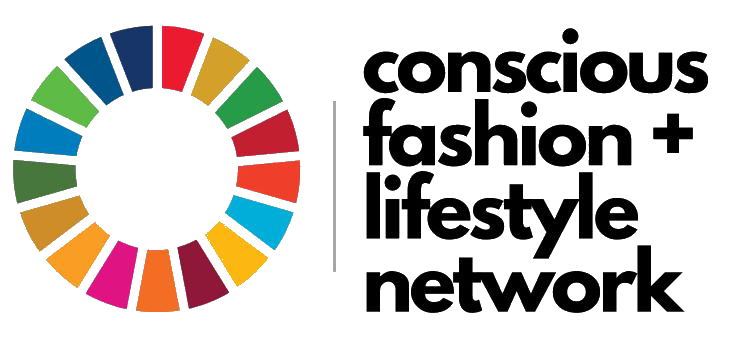Clean up your act: urgent warning for the fashion industry
Asia’s fashion industry must act immediately to reduce carbon emissions – or it’ll be too late for both them and the world. This was the clear message from experts at ACTAsia’s Compassion in Fashion Forum in Shenzhen, China, which, for the first time, took place at Shenzhen Fashion Week. The forum, entitled ‘Living a Carbon Neutral Life’, heard that the fashion industry creates between 6% and 8% of carbon emissions globally and is one of the world’s largest polluters.
“If we continue on the current track we will exceed the target the world gave itself in the Paris Agreement in 2015,” said Dominique Simard, executive director of Shenzhen Garment Industry Association Fashion Industry Sustainable Development Working Committee, which organised the forum in partnership with ACTAsia.
“The agreement was to keep global warming to around 2 degrees Celsius, or ideally around 1.5 degrees. We’re not doing enough.”


Change is vital
Dominique warned that despite warnings about threats to the environment, the global population continues to grow, more people are able to consume fashion, and there’s more fashion than ever available for them to buy. Fashion companies and designers were urged to reduce their use of materials that have a big impact on the environment, such as conventional polyester and cotton – and to look into recycling and organic options.


Designers in particular were encouraged to create with sustainability in mind, giving thought to how their products could help make the world better and where they will eventually end up. Dominique said: “Globally there’ll be much more legislation and many more policies introduced to impose change on brands.
“For those who wait, you’ll wake up one day and it’ll be too late. This is why it makes sense to get started now.
“You’ll need to do this to keep your clients and find new clients, because soon all of the Western brands will have to provide it. Really, we have no choice.”
“We need to think about how we can live together harmoniously to ensure public health, added Xiao Qing, deputy secretary general of the China Biodiversity Conservation and Green Development Foundation (CBCGDF).
“This would also bring benefits relating to the protection of energy, animals and biodiversity – and help prevent transmission of diseases.”


Watch out for greenwashing
Fur was highlighted as one of the most polluting materials used in the fashion industry and consumers were warned not to be taken in by the industry’s attempts to persuade them otherwise, including Furmark®, its certification and traceability scheme.
Richard Bissett, from Respect for Animals, said: “The fur industry has been, and continues to be, responsible for diversity loss on a massive scale.
“Pollution from fur factory farms often has a devastating effect on local water bodies, soil and air quality.
“Furmark’s® standards generally reward the status quo with no requirement to go beyond normal industry practice and basic legal requirements.”
Kerry Bannigan, executive director of the Fashion Impact Fund, agreed that greenwashing is an issue, making it hard for consumers to know what to buy and which claims are true.
She said: “Consumers need the tools, information and resources to discern the true meaning of sustainability with the products they buy.
“We are all consumers, we are all global citizens and we can all make a difference through our buying habits.”
“Everyone is responsible for making choices that are more compassionate and sustainable to ensure that our global health can be protected,” added Xiaoya Liu, ACTAsia Caring for Life Education’s programme lead in China.


Sustainability education for designers
Concerns were also raised that less than 32% of fashion designers have been taught about sustainable design as part of a university course module. Hannah Lane, director of partnerships at Redress – a Hong Kong-based charity which educates consumers and the fashion industry about sustainable fashion – warned that the situation is getting worse rather than better.
“Fashion is still incredibly wasteful,” she said.
“Every single second, the equivalent of a rubbish truck of textiles is landfilled or burned.
“The industry is getting worse. If left unchecked, carbon emissions are looking like they’ll surge 60% by 2030.”
She emphasised the need to make sustainable education a core part of fashion designers’ education rather than an ‘add on’.
John Lau, who is Dean of Academic Strategy at the London College of Fashion, agreed. He said: “I think a lot of it is down to education, to educate professionals that there’s a different way of doing things.”
“For me part of a fashion student’s design curriculum should be on farming – they should know where materials are actually coming from.”


Innovation through technology
The forum, which took place on Friday 28 October, also heard from Alibaba Cloud’s Guo Longzhu. The company provides technology to help companies track information about their products’ sustainability and carbon footprint and easily share this with their customers. Collaborations include projects with farmers producing seafood and vegetables: the technology allows consumers to use their phones to scan QR codes on the products to discover their sustainability credentials. Guo said: “We help our clients achieve carbon neutrality in a more comprehensive and efficient way.
“Commercialising all of this is absolutely natural and reasonable – we must allow enterprises to benefit from turning green.”
“More and more businesses are increasing their CSR activity, which is positive,” added John Nguyen, head of retail and consumer, at the Department for International Trade at the British Consulate.
“There is a huge amount of innovation in fabrics, making the move away from fur easier and accessible, while contributing positively to animal welfare. This matters to both businesses and consumers.”


Working with new materials
Fashion designer and artist Jinky Huang is passionate about innovative, sustainable materials and provided the forum with a showcase of his work. These included a new, very thin material that’s made from stone and biodegrades within two years – and a fabric made from cork. He described how he has seen the words sustainability and recyclability used frequently in shopping centres, but said that for most mainstream brands, that’s all it is – just branding.
“I’ve talked to many brands and they don’t know how to make the change. We – who have the ability to – must start first and show them how.
“This word ‘sustainable’ must be eliminated – it should be something built within our future society, our lifestyles, every day of our lives.
“In the future, we won’t have to talk about it – we will live within it.”

If you missed out don’t worry.
You can now watch the full webinar recording on YouTube.
We rely on donations in order to continue our vital campaign and education work on fur free and sustainable fashion. If you would like to support us, you can donate via the website.
![ACTAsia [logo]](https://www.actasia.org/wp-content/themes/ACTAsia-2022-theme/assets/img/actasia-en-colour.svg)



